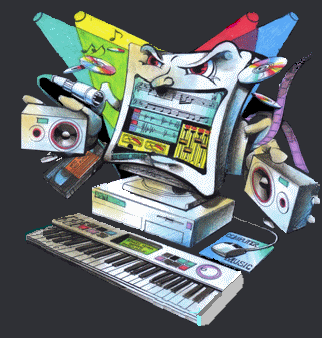 |
Musique concrete employs primarily material gathered from sources previously considered as nonmusical -- that is, noises of all varieties. These are dissected, transposed, amplified, and otherwise manipulated electronically. The resultant sounds are recorded on tape and then assembled to form musical patterns. Pierre Schaeffer, Olivier Messiaen, Pierre Boulez, and Edgar Varèse have worked in this medium.
Sounds from conventional musical sources have been the primary materials utilized by composers of the New York "school", such as Otto Luening and Vladimir Ussachevsky in their music for tape recorders. Manipulations may involve change of tape direction or tape speed. Frequencies may be used to react against one another to produce combinations tones.
European composers of electronic music, including Karlheinz Stockhausen in Cologne and Luigi Nono in Milan, made extensive use of sound produced by electronic means. Electronic generators, used in combination with filters, modulators, and similar devices may produce either nearly pure sounds or complex ones, with any number of harmonics, with any given order of emphasis. They may also produce irregular sounds or noises. Any of the resources listed above may be combined with traditional sources of musical sounds, such as voice or orchestra.
The development of the RCA Electronic Synthesizer and its installation at a center directed by Columbia and Princeton Universities stimulated much interest in this field. It allowed the composer direct control over a vast range of tonal possibilities. The development of smaller systems, such as those of Buchla and Moog, made the potential of electronic music available to a wider number of composers.
With the advent of personal computers and MIDI (Musical Instrument Digital Interface), the potential for electronic musical composition is seemingly infinite. Hardware and software for the production, recording, and manipulation of sound is extremely accessible, allowing composers at any level of expertise to create music at any level of complexity they so desire.
 |